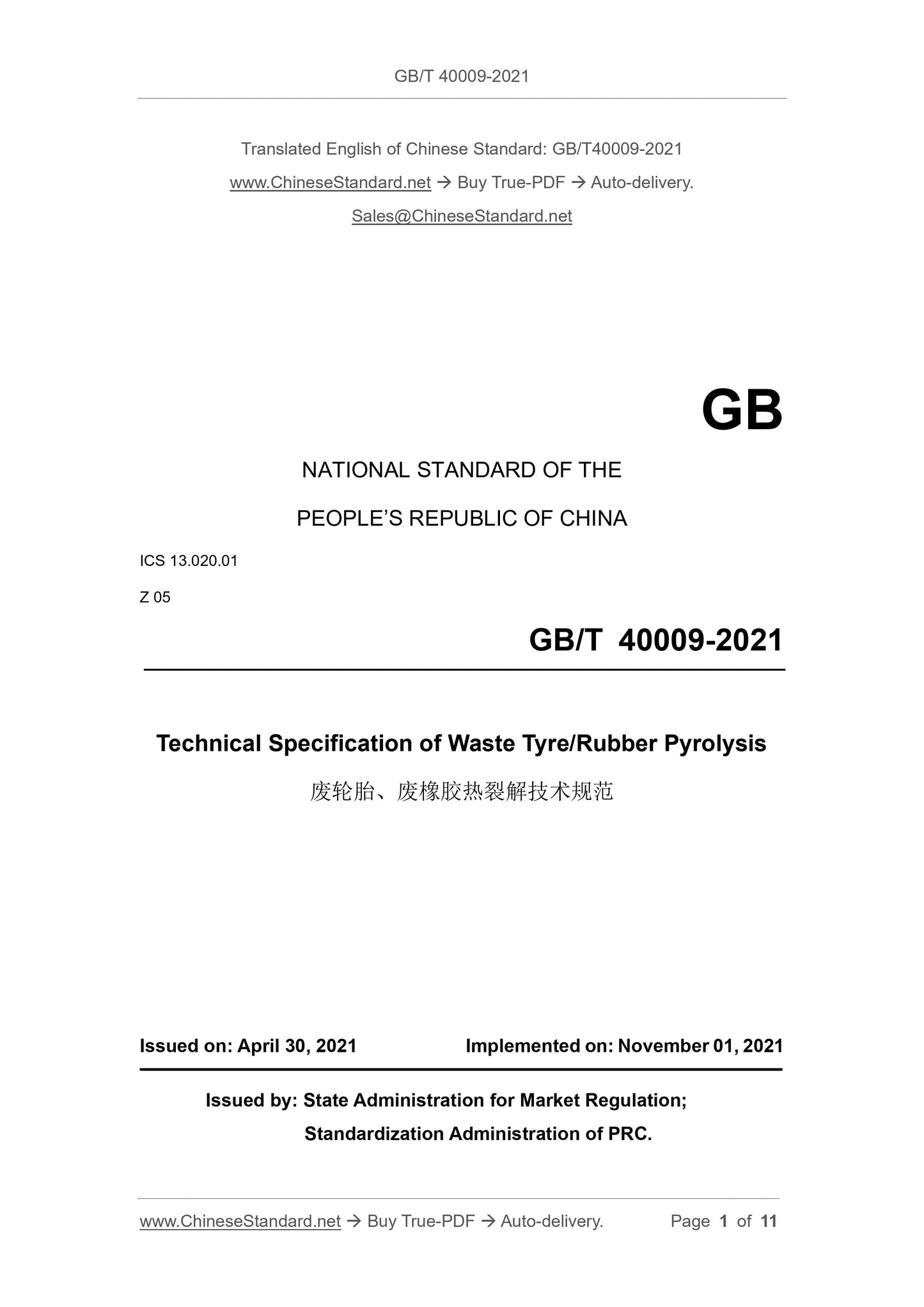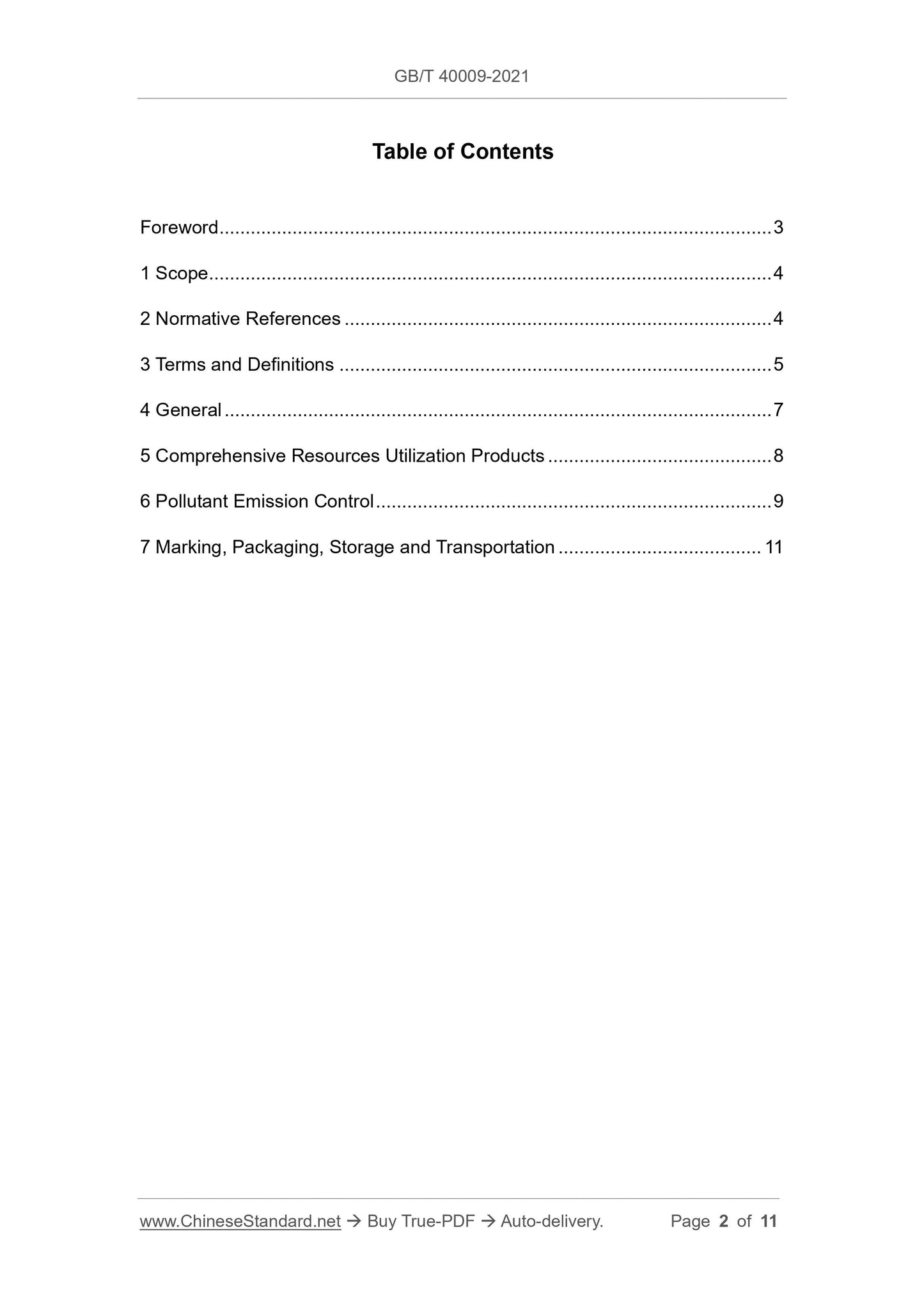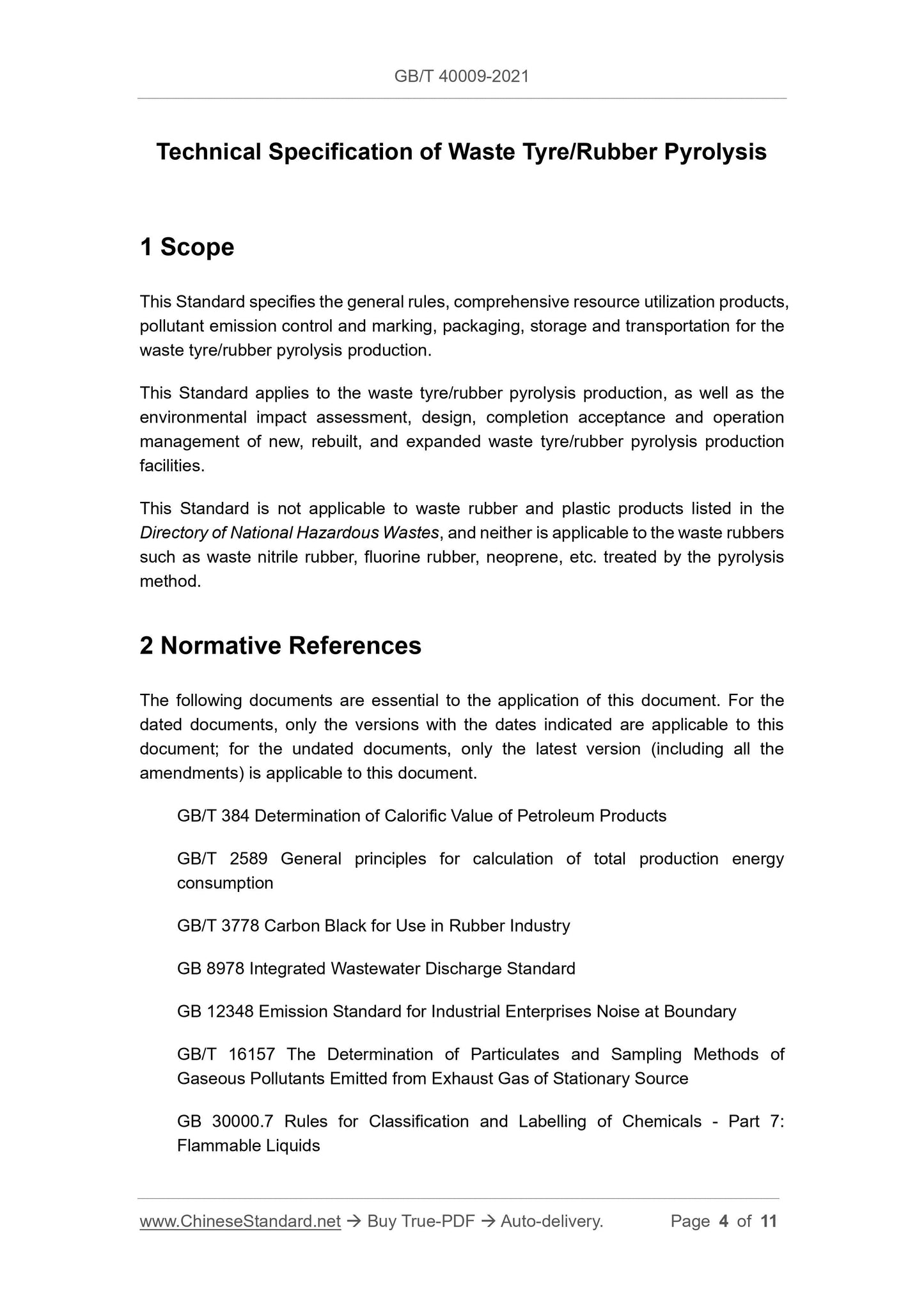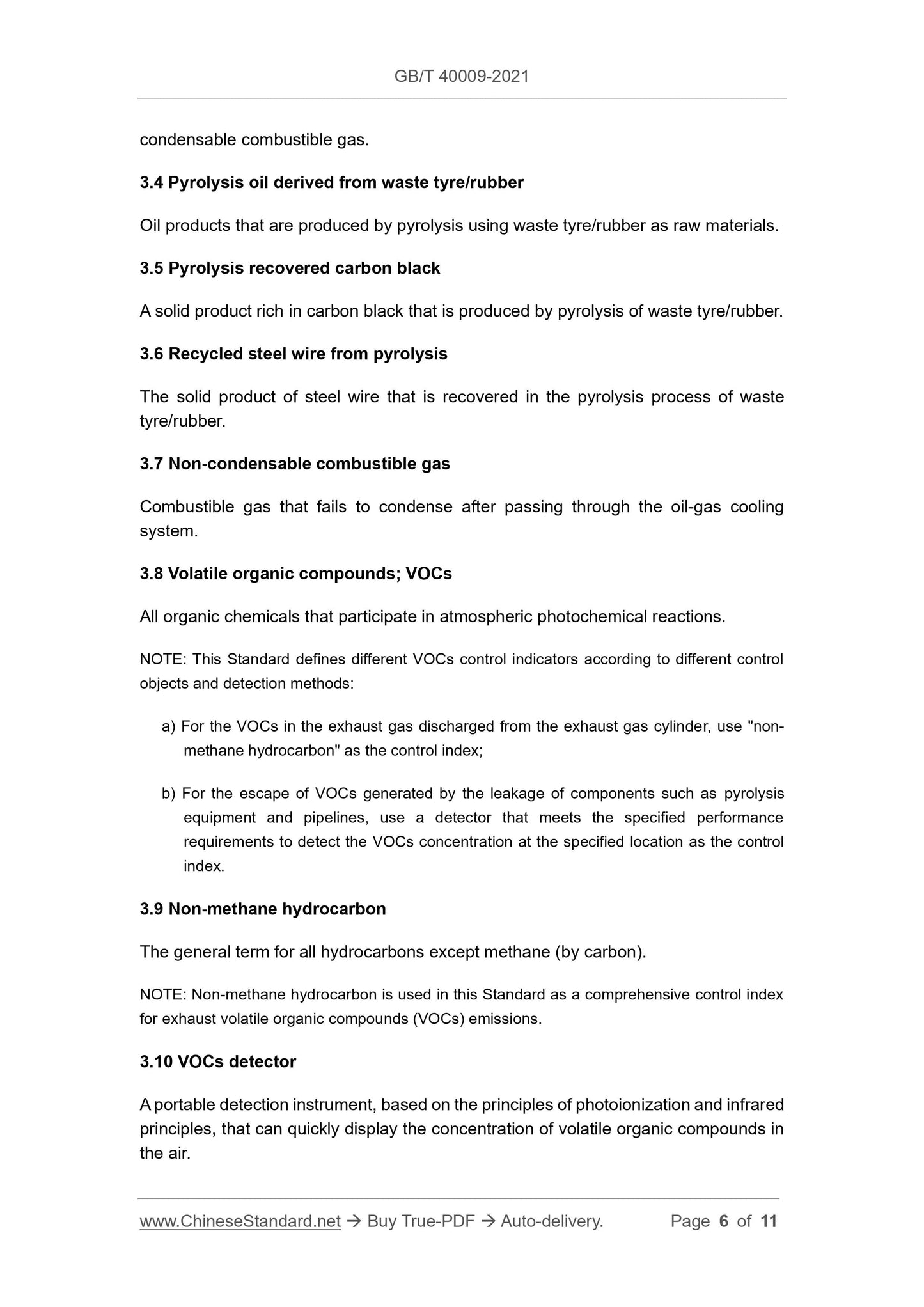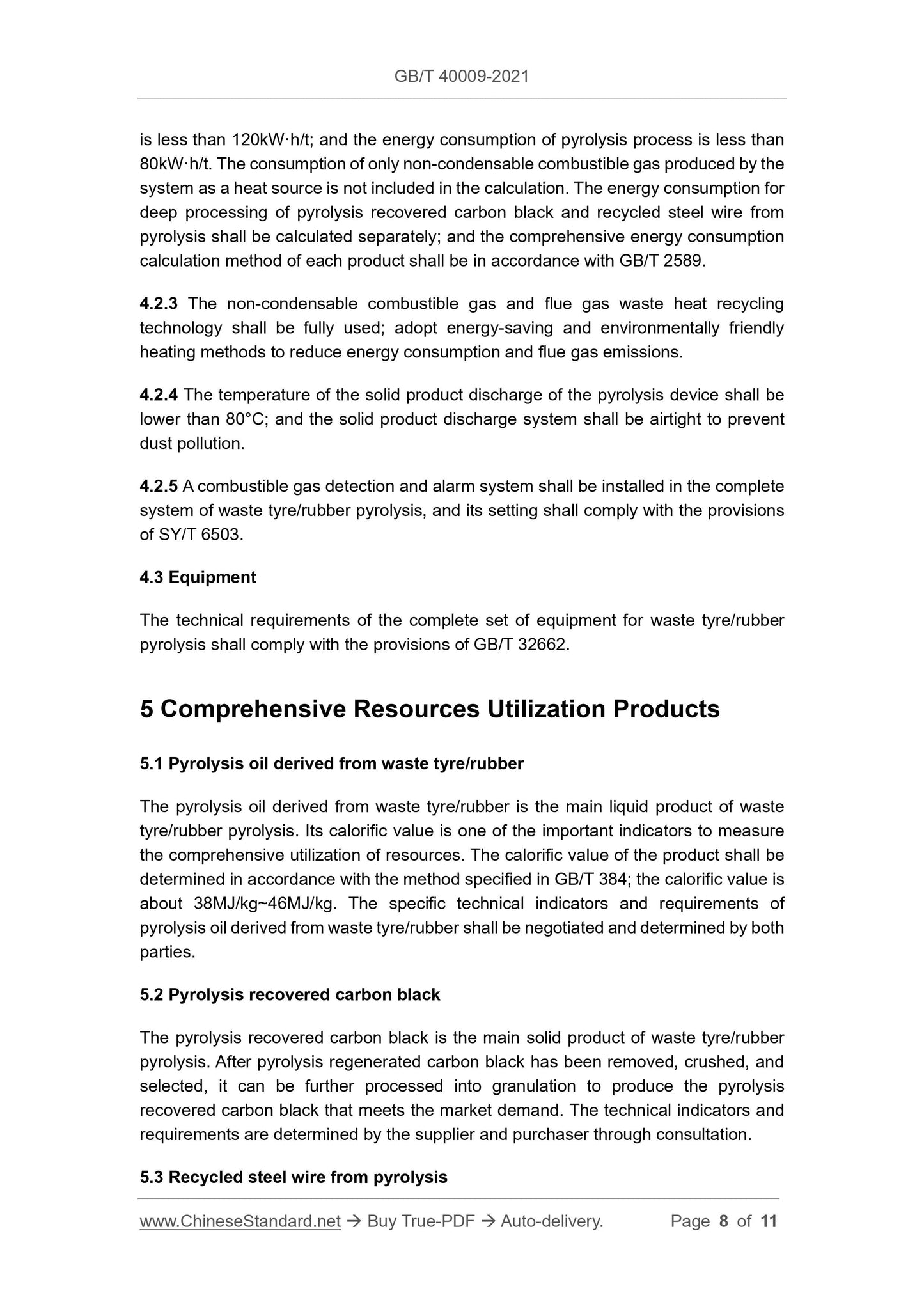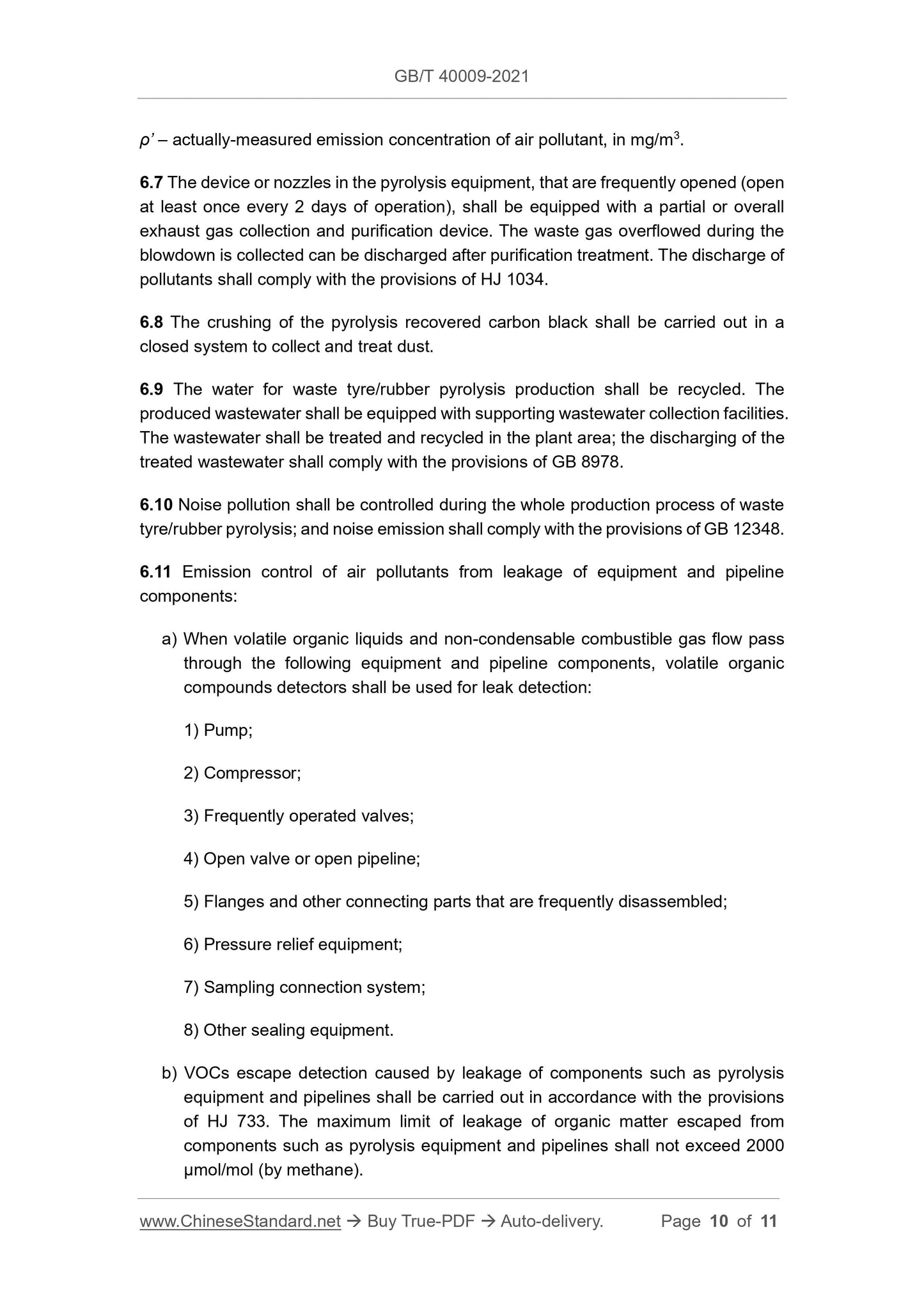1
/
of
6
www.ChineseStandard.us -- Field Test Asia Pte. Ltd.
GB/T 40009-2021 English PDF (GB/T40009-2021)
GB/T 40009-2021 English PDF (GB/T40009-2021)
Regular price
$165.00
Regular price
Sale price
$165.00
Unit price
/
per
Shipping calculated at checkout.
Couldn't load pickup availability
GB/T 40009-2021: Technical specification of waste tyre/rubber pyrolysis
Delivery: 9 seconds. Download (and Email) true-PDF + Invoice.Get Quotation: Click GB/T 40009-2021 (Self-service in 1-minute)
Newer / historical versions: GB/T 40009-2021
Preview True-PDF
Scope
This Standard specifies the general rules, comprehensive resource utilization products,pollutant emission control and marking, packaging, storage and transportation for the
waste tyre/rubber pyrolysis production.
This Standard applies to the waste tyre/rubber pyrolysis production, as well as the
environmental impact assessment, design, completion acceptance and operation
management of new, rebuilt, and expanded waste tyre/rubber pyrolysis production
facilities.
This Standard is not applicable to waste rubber and plastic products listed in the
Directory of National Hazardous Wastes, and neither is applicable to the waste rubbers
such as waste nitrile rubber, fluorine rubber, neoprene, etc. treated by the pyrolysis
method.
Basic Data
| Standard ID | GB/T 40009-2021 (GB/T40009-2021) |
| Description (Translated English) | Technical specification of waste tyre/rubber pyrolysis |
| Sector / Industry | National Standard (Recommended) |
| Classification of Chinese Standard | Z05 |
| Word Count Estimation | 7,737 |
| Issuing agency(ies) | State Administration for Market Regulation, China National Standardization Administration |
Share
